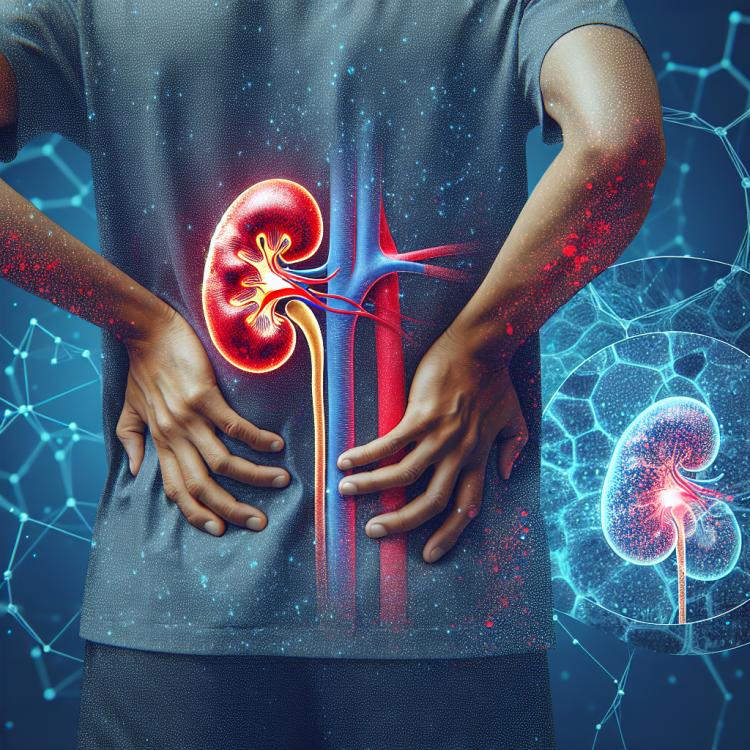
Paranephritis: symptoms, causes, diagnosis, and treatment
Fundamentals of perinephritis
Paranephritis is an inflammatory disease of kidney tissue, characterized by the damage of the perinephric fat of the kidney. This condition is usually caused by a bacterial infection and can lead to serious complications such as kidney abscesses, sepsis, and renal failure. The diagnosis of paranephritis is made based on clinical symptoms, laboratory results, and instrumental studies. Treatment includes antibiotic therapy, drainage of abscesses, and maintenance of kidney function. Early detection and adequate treatment of paranephritis are crucial to preventing serious complications and preserving kidney function in patients.
Etiology of perinephritis
Paranephritis is usually caused by an infection that spreads to the kidneys through the bloodstream or neighboring organs. The main causes include bacterial infections such as urinary tract infections or bacteremia. Other causes may include kidney injuries, surgical interventions, or disturbances in kidney blood supply that can lead to the development of paranephritis.
- Bacterial infections: Bacteria such as E. coli can penetrate the kidneys and cause inflammation.
- Urinary tract infections: A urinary tract infection can spread to the kidneys, leading to the development of perinephritis.
- Bacteremia: When bacteria enter the bloodstream, they can reach the kidneys and cause an infection.
- Kidney injuries: Damage to the kidneys, such as from trauma or surgical intervention, can promote the development of perinephritis.
- Circulatory disorders: Insufficient blood circulation in the kidneys can reduce protective functions and the ability to fight infection.
The clinical picture of paranephritis
The clinical picture of perinephritis includes a variety of symptoms that can vary depending on the degree of inflammation and the extent of the process. Patients often complain of pain in the lower back or lumbar region, fever, weakness, and general malaise. Some may experience nausea, vomiting, loss of appetite, and changes in urination, including frequent urination, blood in the urine, or cloudy urine.
- Lower back pain: a common symptom felt in the kidney area.
- Fever: an increase in body temperature may accompany a kidney infection.
- General malaise: patients may experience weakness, fatigue, and discomfort.
- Urinary complaints: changes in urination, such as blood in the urine, frequent urination, or cloudy urine.
- Nausea and vomiting: some patients may have symptoms related to the digestive system.
Expert opinion on the treatment of paranephritis.
The expert opinion on the treatment of paranephritis emphasizes the importance of timely and adequate therapy for this condition. The main principle of treating paranephritis is the use of antibiotics, specifically selected based on the sensitivity of the pathogen, to halt the spread of infection and prevent complications. Additionally, in some cases, surgical intervention may be required to drain purulent accumulations and remove the source of infection.

Main methods for diagnosing pyelonephritis
Diagnosis of perinephritis usually includes a visual examination of the patient, medical history, physical examination, and laboratory tests. Clinical signs such as back pain, fever, and changes in urination typically allow the doctor to suspect the presence of perinephritis and refer the patient for further examination. Important diagnostic methods include a complete blood count and urinalysis, bacteriological examination of urine, ultrasound examination of the kidneys, and laboratory culture studies.
- Clinical examination and history: the doctor conducts a physical examination of the patient and takes into account their medical history.
- Laboratory tests: include blood and urine tests to identify inflammation and infection.
- Bacteriological examination of urine: allows determining the type of microorganisms that caused the infection.
- Ultrasound examination of the kidneys: helps visualize the kidneys and detect possible changes related to the inflammatory process.
- Laboratory culture study: allows growing microorganisms from urine samples and determining their sensitivity to antibiotics.
Treatment of perinephritis
In cases of severe perinephritis or complications, surgical intervention may be required, such as abscess drainage or removal of affected tissue. The optimal treatment approach usually depends on the extent of inflammation, the presence of complications, and the overall condition of the patient.
- Use of antibiotics: One of the main methods of treating perinephritis is the use of antibiotics to combat bacterial infection.
- Anti-inflammatory drugs: Anti-inflammatory drugs are used to reduce inflammation and alleviate pain.
- Supportive therapy: Includes monitoring the patient’s hydration levels and maintaining blood pressure during acute conditions.
- Surgical intervention: In cases of severe perinephritis or complications, surgical drainage of the abscess or removal of the affected tissue may be required.
- Individual approach: The optimal treatment plan is chosen based on the degree of inflammation, the presence of complications, and the overall condition of the patient.
Prevention of perinephritis
In addition, it is important to follow a proper diet and consume an adequate amount of liquid to prevent the formation of stones, which can also be a risk factor for the development of paranephritis. Regular urological check-ups, adequate treatment of infections, maintaining overall health, and strengthening the immune system can also help in the prevention of paranephritis.
- Personal hygiene: Regular washing and care for the genitals help prevent urinary tract infections.
- Hydration regimen: Consuming enough fluids helps cleanse the kidneys and reduces the risk of stone formation.
- Regular urological check-ups: Timely detection and treatment of urinary tract infections help prevent the development of perinephritis.
- Proper nutrition: A balanced and healthy diet contributes to the overall strengthening of the body, including the kidneys.
- Maintaining the immune system: Strengthening immunity through a healthy lifestyle, physical activity, and proper nutrition helps prevent infections and the development of perinephritis.
Interesting features of perinephritis
Another interesting aspect is that perinephritis can be caused by various microorganisms, including bacteria, viruses, and fungi. This shows a wide range of possible causes of the disease, and often requires a specialized approach to the diagnosis and treatment of perinephritis depending on the infectious agent.